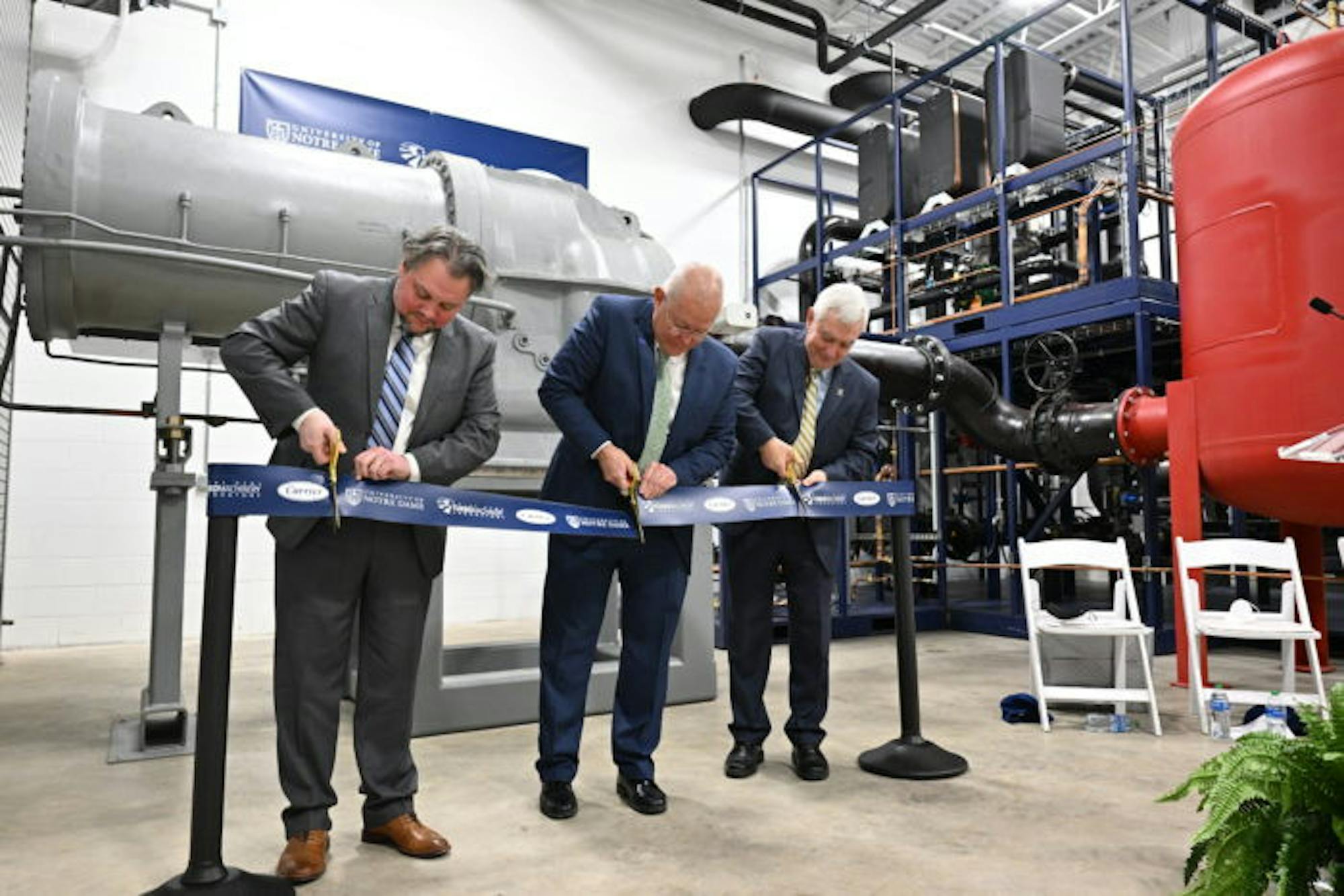Carrier Global Corporation and Notre Dame Turbomachinery Laboratory (NDTL) celebrated the completion of the new Willis Carrier Centrifugal Compressor Technology Laboratory on Friday. Carrier, an industry leader in heating, ventilation and air conditioning (HVAC) systems, collaborated with the NDTL to establish the company’s largest compressor test facility.
The NDTL facility located in Ignition Park in South Bend tests high power rotating equipment, or turbomachinery, to conduct research and testing on aerodynamics and power generation. The new Carrier test cell at the NDTL will allow students and researchers in the lab to conduct research on compression in the refrigeration cycle, NDTL director Joshua Cameron said.
Cameron explained that central air conditioning units that sit outside of homes require a small compressor inside the units. The refrigeration cycle for larger tasks, such as cooling high rises or chilling water for a large campus, require much larger compressors. In order for Carrier to conduct research and product development on such large compressors, Cameron said, they needed to expand their testing capability.
“They didn’t have that scale available at any of the labs that they have at their engineering centers,” Cameron said.
The NDTL had a prior relationship with a senior vice president of engineering at Carrier who facilitated the establishment of the new test cell. Carrier engineers asked for more testing capabilities and they were eventually directed to the NDTL — leading to the establishment of the new Carrier test cell.
The new compressor lab at the Ignition Park NDTL facility is a unique hands-on educational opportunity for students, Cameron said.
“They will get to operate a world-class facility,” he said. “It’s the biggest centrifugal compressor test cell that Carrier has globally, so they get literally hands on. They get to touch it. They get to change it.”
The maximum power capability at the Ignition Park facility is 10 megawatts, vice president for research at Notre Dame Robert Bernhard said. Meanwhile, the maximum capability at the University’s original turbomachinery facility on campus at the White Field Research Laboratory is 500 kilowatts — a large capability for a university, Bernhard said — yet just one-twentieth the capability of the Ignition Park facility.
In addition to having access to a world-class facility, Cameron said the opportunity to work alongside both Notre Dame and Carrier engineers and scientists is beneficial for students.
“They get to work side-by-side with our engineers, our scientists, Carrier’s engineers and scientists, and so they will be participating in the technology development programs, the research programs that Carrier is conducting throughout the year,” Cameron said.
Carrier also established the Carrier Center of Excellence along with the new test cell. The designation of the center of excellence signals the close collaboration between the University and Carrier and sets up an internship pipeline, Cameron said.
The pipeline will allow students to intern with the NDTL earlier on in their academic careers before eventually interning at Carrier.
The University and Carrier recently started a three-year collaboration. In addition to the internship pipeline, Carrier and Notre Dame will work closely on daily testing and research in the new test cell.
“What Carrier is going to do is identify certain studies they want Notre Dame to do for the research part side of it, so they might give a new configuration, or they might want to test for the efficiency of a new model that they’re developing or something like that,” Bernhard said. “And so the graduate students and the staff will be taking those measurements and giving that information back to Carrier.”
While Notre Dame protects the intellectual property of Carrier, students and researchers will be able to publish more fundamental research results that come from work in the test cell, Cameron said.
Cameron said the collaboration between Carrier and the University will provide students with a unique preview of the jobs they will have after graduation.
“I know firsthand that when students get to come and work on real scale, real world problems and interact with my engineers and Carrier’s engineers that they’re getting just an education that’s unmatched,” Cameron said. “You just can’t learn that stuff in a textbook.”













